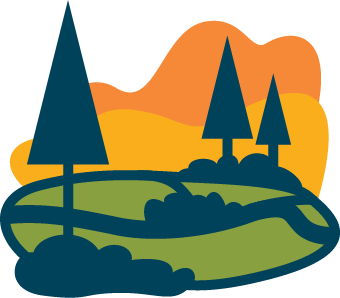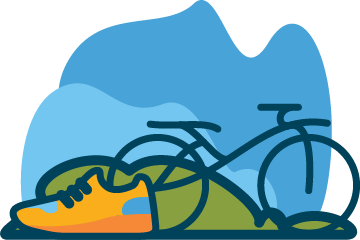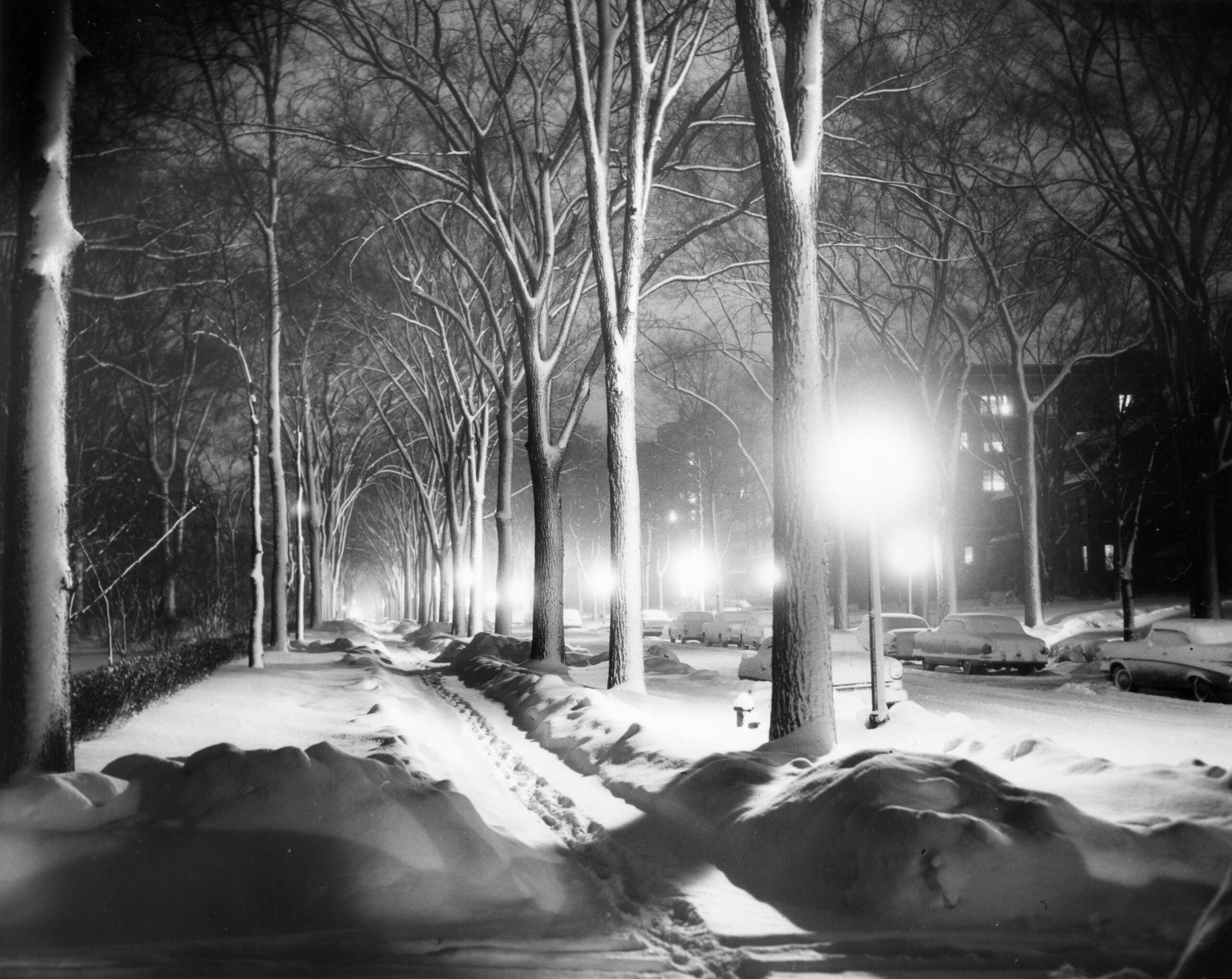
Winter officially began on Dec 21st and ends on March 19th. With the start of February we are now in the deepest part of the season, with almost as many days ahead of us as behind us. At this halfway point we should ask ourselves: are we wintering well?
The world is filled with people who struggle with winter. Still, others delight in it. Pick up a copy of Dr. Kari Leibowitz’s recently published How to Winter and you will quickly learn there is an art (and science) to wintering. You will also see how the ability to enjoy this time of year is not just up to us as individuals. Entire cultures fare better or worse in their ability to winter well, reflecting a community-level role in influencing how people interact with the season.
It’s not uncommon to bemoan the darkness and cold, to struggle from seasonal challenges like lethargy or even seasonal affective disorder (SAD). Despite these hardships, there are enough examples around the world of communities that winter well to know that it is possible. With some effort, we can get through the season with enjoyment, positivity, and even a little anticipation for the season to come again next year.
As a community, Buffalo has a history of offering ways of enjoying the darkest, coldest time of the year. Here are a few suggestions for wintering in Buffalo, with some great historical images to link the past with the present.
Exercise in nature. We often lack the energy to exercise in winter but it’s one of the best ways to feel better during these dark days. Linking up the mood-boosting benefits of exercise with those you get spending time near nature is even better. One of many exciting features of the new Ralph Wilson Park will be the improved year-round spaces for physical exercise. We are looking forward to the sledding hill, state-of-the-art playspaces, and a year-round walking and biking trail along the water. These will help the community move more in winter. While waiting for RWP to reopen, head out to other parks nearby that have historically helped the community enjoy winter exercise in nature.
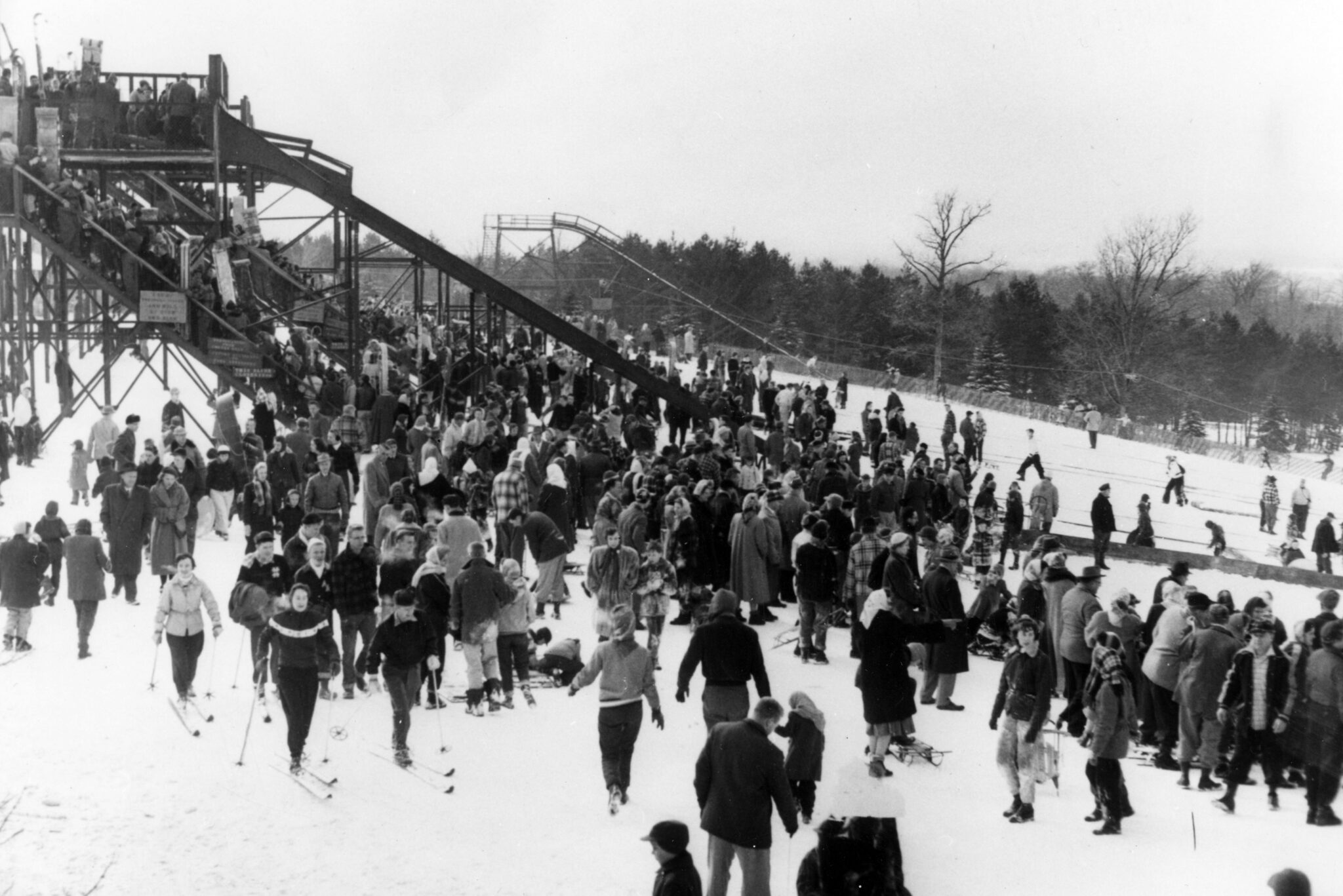
Photo: a crowd gathers to enjoy toboggan slopes set up in another Buffalo area park (Chestnut Ridge) in the winter of 1956. Collection of The Buffalo History Museum. General photograph collection, Parks – Buffalo and Erie County.
Linger in a coffee shop. Coffee shops offer a great atmosphere along with food and drink associated with coziness. Coffee shop visitors are often happy to be there, surrounded by neighbors and swirling scents of sugar and coffee. Even those working often enjoy their tasks more than if they were in an office or at home. Winter is a great time to linger at local coffee spots. Prior to the 1990s when American coffee drive-throughs were invented, you always had to step inside to get your goods. Coffee shops have helped Buffalonians escape the cold for generations and today there remain many options to choose from.
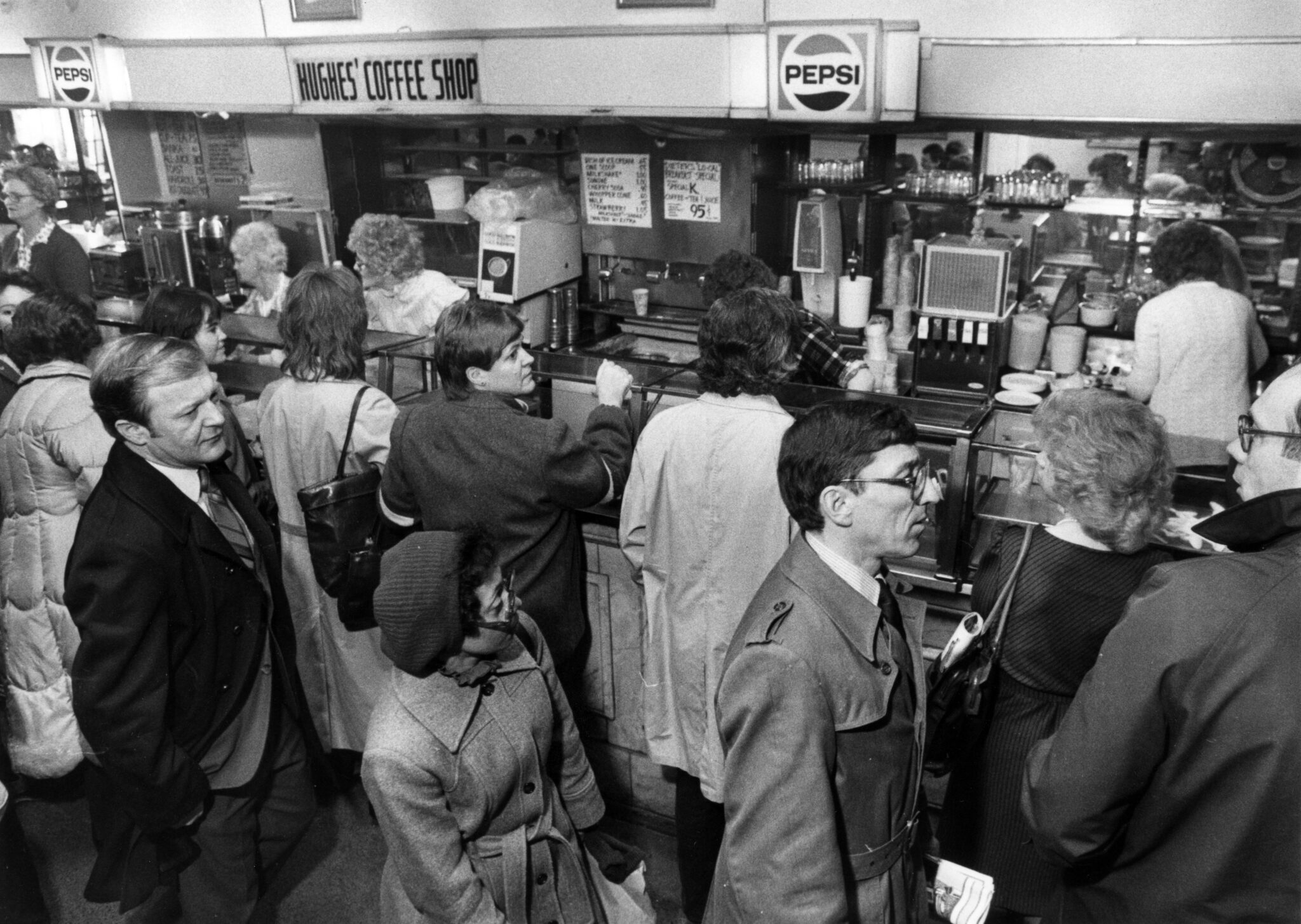
Photo: stopping in at a local coffee spot has long been a part of Buffalo winters. This coffee shop on Main and Swan is crowded on this winter day in 1983. Collection of The Buffalo History Museum. General photograph collection, Buildings – Refreshments – Restaurants.
Eat wintery foods. Modern supply chains have made foods restricted to certain seasons in the past available year-round. The result has been the abandonment of seasonal diets. Abandoning the seasonal food cycle resulted in the abandonment of some of its benefits as well. Wintery foods are filling, warm, and hearty. Instead of reaching for a salad or smoothie, a stew with fresh bread, a bowl of risotto, or something coated with cinnamon and spice may help you connect to the season through your stomach. Generations before us countered the cold weather with these warming foods daily, and for good reason. A return to winter eating could serve us well.
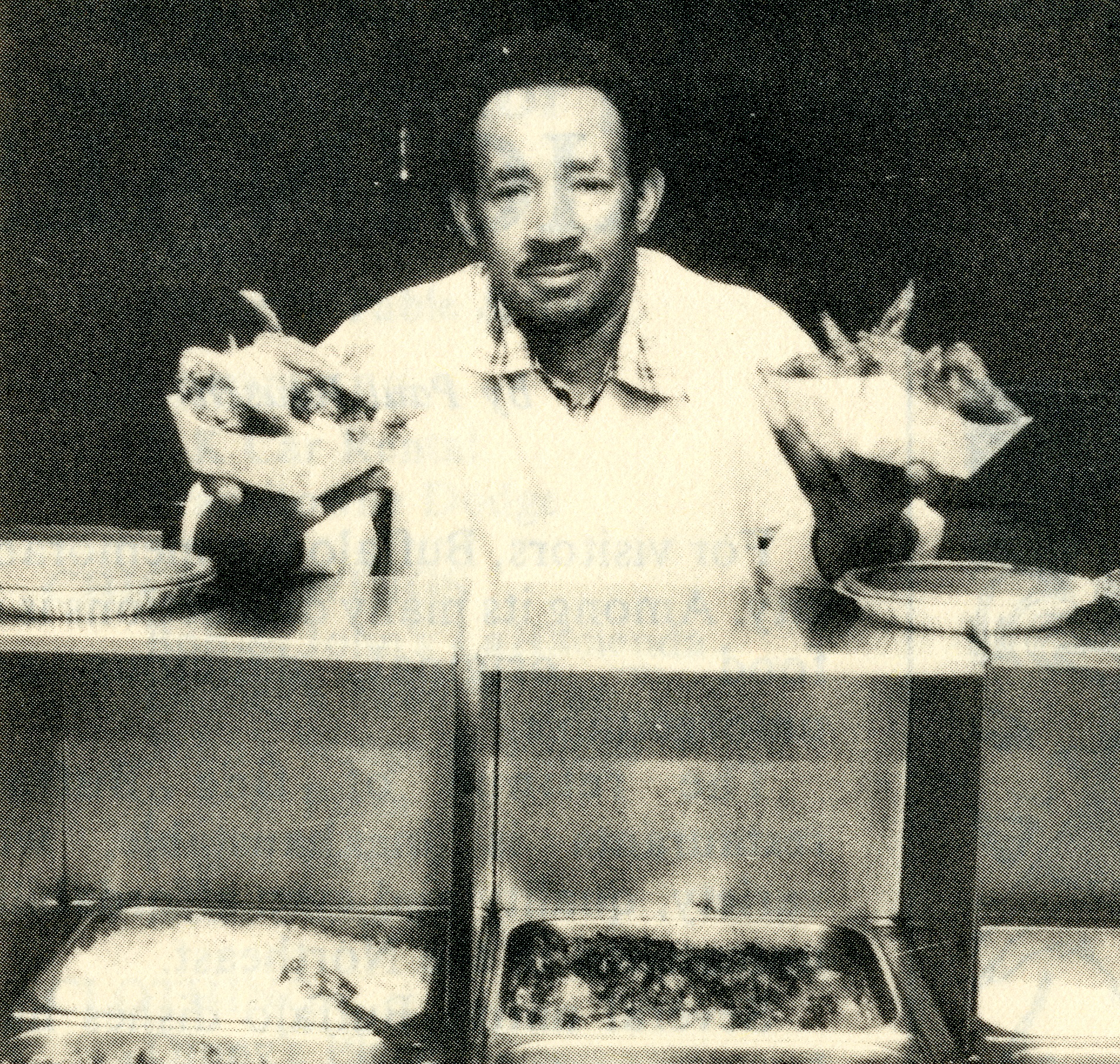
Photo: wing pioneer John Young at Wings & Things in 1981. Chicken wings might be a highlight at many summer events, but they are also a great way to warm up and cheer up on a winter night. Collection of The Buffalo History Museum. The Buffalonian, June/July 1981.
Embrace the darkness and rest. Rather than fight against the shorter days, take a nod from Arctic cultures with far less winter light than we have and embrace the darkness. Find beauty in it. Celebrate it. Enjoy lighting candles and keeping lights low on dark winter evenings. As the lack of light can make us feel sleepy, give yourself permission to rest more as well. While rest is the antithesis to the hustle prioritized in American culture, giving yourself permission to rest more in winter can make the whole season better. Go to bed early, nap, or read quietly without interruption (human or digital). When you slow down you may also see the darkness differently. You may notice how it paints your local places in a new light, providing a kind of beauty you cannot experience the rest of the year.
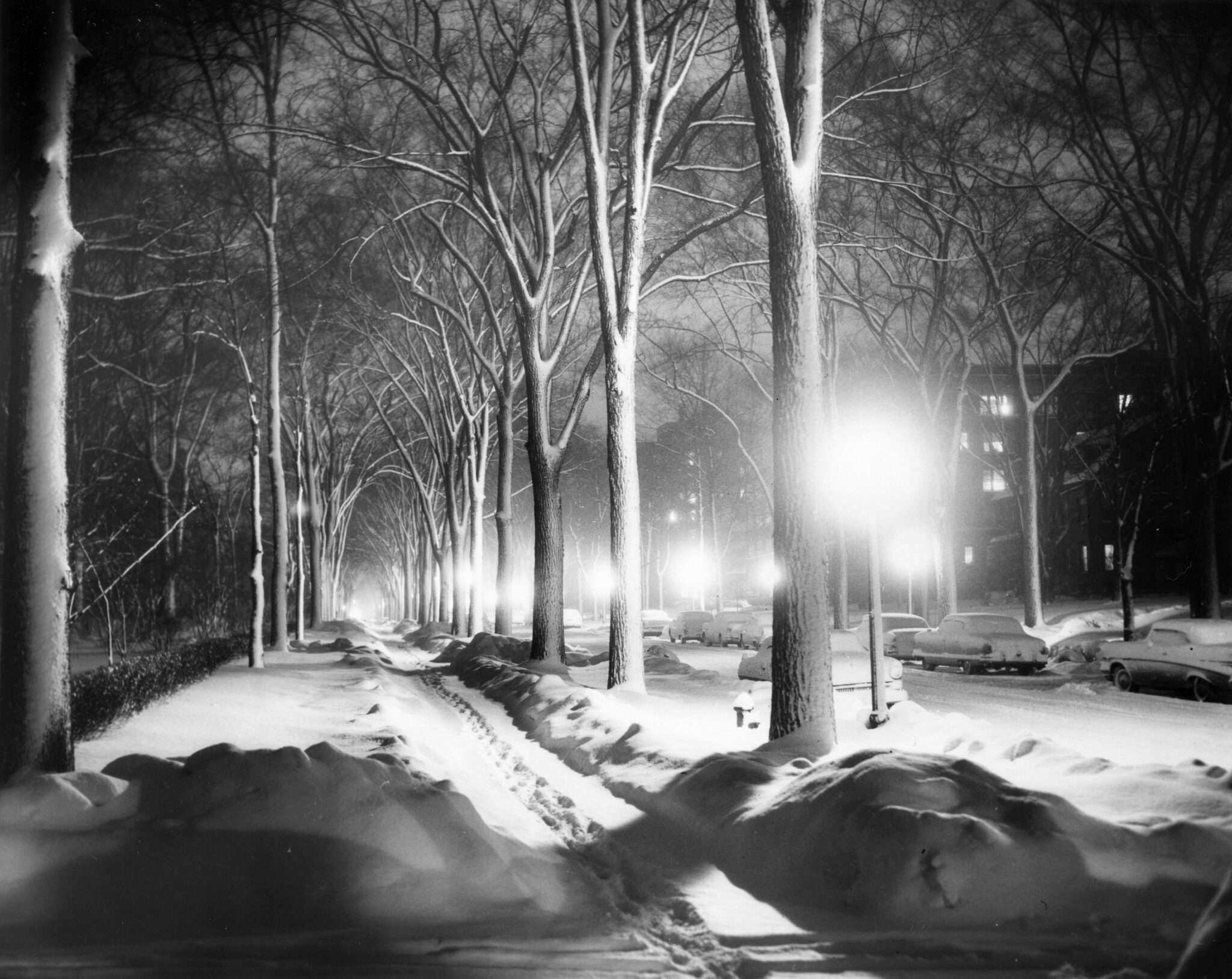
Photo: a still, dark February night on West Ferry Street in 1958 reflecting the beauty that can be found in the darkest season of the year. Collection of The Buffalo History Museum. General photograph collection, Weather – Seasons – Winter
As individuals there is a lot we can do to winter well. But there are also things that communities can do to help entire groups of people winter well. At Ralph Wilson Park Conservancy, we are focused on building a park with the community. Will our mission, and those of others focused on developing quality greenspaces, help humans winter better? We think so. When we look at cultures with high happiness scores we see they are often in places with long winters (looking at you, Scandinavia). When we look closer, we see community-level efforts behind those happiness scores. These places have made significant investments in community features that help people connect with others, enjoy nature, eat seasonally, exercise, and do other things linked to wintering well.
Like other northern cities, Buffalo can continue to improve for the future. As a snowy city with long winters, community-level features for thriving at this time of the year in Buffalo should continue to be a priority. While you focus on individual-level efforts to better thrive this season, we will continue our work at the community-level. We look forward to contributing a park built to support generations of people who will be better able to winter well.
To read more about the project this article is a part of, check out our Heritage Engagement Project page for past and future reading on heritage-building at Ralph Wilson Park in Western New York.


